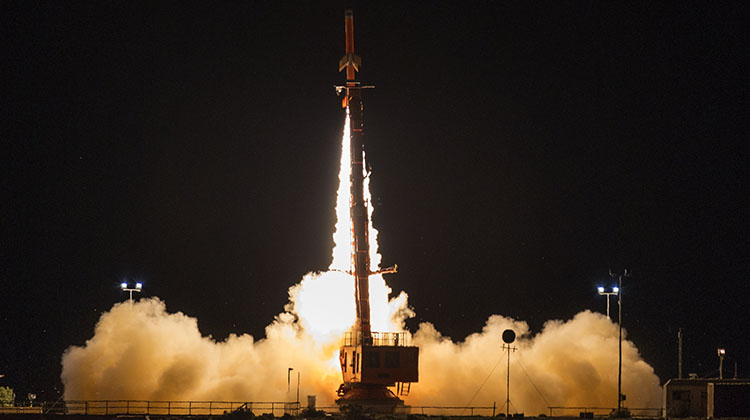
The Australian Government says the country’s national space agency will be based in Adelaide.
Prime Minister Scott Morrison made the announcement on Wednesday alongside South Australia Premier Stephen Marshall. The pair signed a memorandum of understanding to establish the agency in Adelaide.
Great to have Prime Minister @ScottMorrisonMP, Dr Megan Clark and @karenandrewsmp in #Adelaide to announce that the Australian Space Agency will be based at @LotFourteen. #SASpace #SAJobs pic.twitter.com/26htAq0DVc
— Steven Marshall, MP (@marshall_steven) December 11, 2018
The Australian Space Agency’s new home on the site of the old Royal Adelaide Hospital is scheduled to open its doors in mid-2019 with about 20 full-time staff.
Prime Minister Morrison said the agency would act as a launching pad to triple Australia’s space economy to $12 billion and create up to 20,000 jobs by 2030.
In September 2017, the federal government committed to establishing an Australian Space Agency.
An Expert Reference Group chaired by former CSIRO chief Dr Megan Clark to examine what a national space agency would look like outlined nine recommendations for a charter and structure covering a national industry strategy, funding, treaties, working with government departments and engagement with schools and industry, among other matters.
It said the national space agency would have four key roles and responsibilities, namely to lift national and international engagement, set national policy and strategy to realise Australia’s ambitions in the civil space sector, facilitate growth in space industry sector and inspire the nation with Australian’s contribution to human endeavours in space.
The Australian Space Agency was officially established on July 1 2018, with Dr Clark the inaugural head.
The Commonwealth’s 2018/19 budget handed down on May 8 included $26 million over the next four financial years to establish the national space agency.
There was also $15 million over three years from 2019/20 to establish the International Space Investment project, which will “provide grants to strategic space projects that generate employment and business opportunities for Australians”, the budget papers said.
The federal government was also doing trials of a Satellite Based Augmentation System (SBAS), which uses space-based and ground-based aids to support the Global Navigation Satellite System (GNSS) and promises navigational accuracy to less than 10 centimetres.
South Australia has a long history with space
Having the Australian Space Agency in South Australia extends the state’s long history in the sector that stretches back to the 1960s, when Australia became the seventh nation to launch a satellite into orbit.
Named the Weapons Research Establishment Satellite (WRESAT), the 45kg spacecraft was designed and built by Australians and took off from the Woomera Test Range in South Australia on November 29 1967.
After 642 orbits of the earth, the satellite reentered the atmosphere 42 days later when it landed in the Atlantic Ocean.
Dr Clark said the Lot Fourteen innovation precinct on what was the old Royal Adelaide Hospital site would be an “exciting location for the Agency to deliver on our mandate to transform and grow the Australian space industry to inspire and improve the lives of all Australians – underpinned by strong national and international engagement”.
“We’re engaging with companies nationwide, and have already signed Strategic Statements of Intent and Cooperation with three industry partners, all with investments in South Australia, including Airbus, Sitael and Nova Systems,” Dr Clark said in a statement.
“Fleet Space Technologies and Myriota, both South-Australian start-ups have launched satellites and a payload that can help our farmers and other industries use space to monitor sensor networks to improve the productivity of their businesses.
“We look forward to building a new home for the Agency and continuing our close engagement with you all across the nation.”
Federal Minister for Industry, Science and Technology Karen Andrews said Adelaide was selected over other candidates in New South Wales and Queensland.
“South Australia is already home to more than 60 organisations and 800 employees in the space sector and this decision builds on the very strong technology and defence presence in the state,” Minister Andrews said in a statement.
Premier Marshall said having a range of local space industry businesses already established in the state made South Australia the ideal location for the agency.
“I look forward to working with the federal government, industry and our education sector to capitalise on this incredible opportunity for our state,” Premier Marshall said.
VIDEO: A look at the national space agency’s branding and identity from the Department of Industry, Innovation and Science’s YouTube channel.











